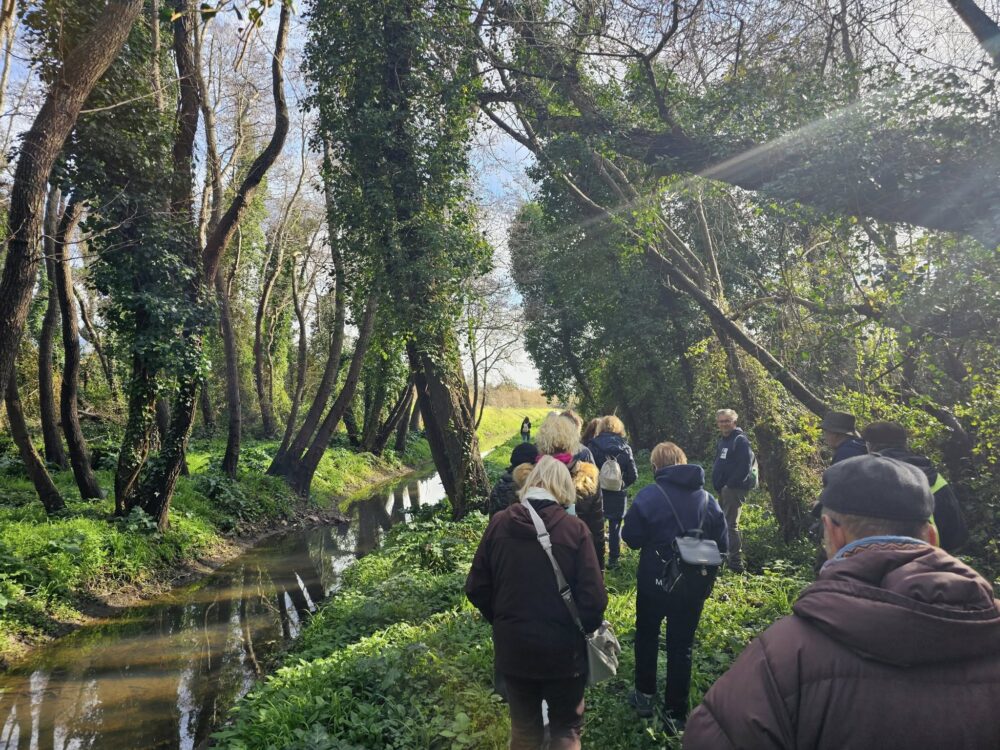On the occasion of the world day of wetlands, two events organized by environmental associations celebrated the importance of Porta di Porta And the area of Ronchi-PoveromoIn Tuscany, fundamental places for biodiversity and environmental protection
Lake Porta: an abandoned area evolution to a protected natural reserve
Versilia, the Porta di Porta It is one of the last coastal wet areas of northern Tuscany and an example of how the commitment of local communities can transform a degraded area into a protected natural resource. In the course of the 70s and 80s, the pelvis was considered a marginal reality , intended for abandonment and uncontrolled use.
Marmettola landfills (a type of waste that derives from the marble industry) and waste, including processing debris, industrial sludge, resulting building materials and unregulated urban waste, threatened local biodiversity. In addition, the speculative aims had made the lake a vulnerable place.
Only thanks to the strong pressure of environmental associations and the involvement of citizenship, was it possible to stop this havoc and start the recovery and enhancement process of the area. Result?
In 1995, Lake Porta was recognized as a protected area and in 2003 it was designated as an area of European interest for its ancestor (the set of species of birds that inhabit a certain place).
Ronchi-Poveromo: a fragile ecosystem and important for biodiversity
Not far from Lake Porta, the area of Ronchi-Poveromo It is another example of humid ecosystem of great ecological value. This territory, which includes the damp woods of the Ronchi, the salt forest and the hole of the Sforza (a natural depression of the ground), is a fundamental resource for local fauna and flora.
Il WWF Massa Carrara He has promoted awareness -raising activities, which included guided tours and insights on these ecosystems, which represent an ideal habitat for numerous animal species, including migratory birds, amphibians and invertebrates.
Specifically, the wet forest of the Ronchi, characterized by abundant vegetation and a strong presence of tall trees, is a perfect place to observe how nature interacts in a humid environment. But let’s get to the event.
The world day of wetlands: a date to reflect and act
The World Day of Wetlandscelebrated every year on February 2, was established in 1997 by Ramsar agreement, An international treaty signed in 1971 in the homonymous Iranian city, which aims to protect these ecological environments, often threatened by harmful human activities, such as urbanization, uncontrolled fishing and pollution.
But why are wetlands crucial for the life of the planet?
The importance of wetlands
The wetlands They are natural habitats that develop in environments between water and earth, such as lakes, swamps, turbberries, estuaries and mangroves. These ecosystems are fundamental for the environment, since they contribute to the adjustment of the water cycle, they favor the purification of water resources, offer refuge for numerous species and store carbon, thus reducing the impact of climate change. In addition, they are vital areas for human populations, since they protect the coasts from floods, they favor agriculture and offer resources for tourism and fishing.
A collective commitment for the protection of wetlands
The success of the initiatives on the world day of wetlands has demonstrated the growing interest in the protection of natural ecosystems. Lake Porta and the Ronchi-Poveromo area are examples of how the commitment of associations, institutions and community can preserve these areas of great ecological value. However, it is essential that these efforts do not stop awareness, but that they are translated into concrete actions of protection and conservation.
«For my part, I thank the environmental associations that organized these initiatives “declared the president of the North Tuscan reclamation consortium, Dino Sodini.
«These events allow you to know and enhance the wetlands, often little known, but which play a crucial role for biodiversity and human well -being, contributing to the regulation of climate and water purification. Also, they make the’more resilient environment and adaptable to climate change. Wet areas are areas rich in biodiversity and extremely fragile, which need the’everyone’s commitment to be protected ».

